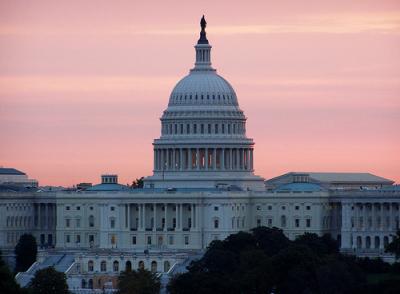
Urbanism in the Stimulus and Beyond
CNU Looks Ahead to Build on the Economic Recovery and Reinvestment Act
Submitted on 02/27/2009. Tags for this image:
Warning: Table './archive_cnu/watchdog' is marked as crashed and should be repaired query: INSERT INTO watchdog (uid, type, message, variables, severity, link, location, referer, hostname, timestamp) VALUES (0, 'php', '%message in %file on line %line.', 'a:4:{s:6:\"%error\";s:7:\"warning\";s:8:\"%message\";s:39:\"Invalid argument supplied for foreach()\";s:5:\"%file\";s:100:\"/var/www/archive.cnu.org/htdocs/sites/cnu.civicactions.net/themes/cnu/node-content_news_item.tpl.php\";s:5:\"%line\";i:27;}', 3, '', 'http://archive.cnu.org/cnu-news/2009/02/urbanism-stimulus-and-beyond', '', '3.15.143.18', 1732625532) in /var/www/archive.cnu.org/htdocs/includes/database.mysql.inc on line 135
The recently signed Economic Recovery Act has its strategic side — high-speed rail, smart grid technology — and its not-so-strategic side — too many highway expansion projects. On the whole, in addition to a number of provision that should please urbanists, the stimulus act creates near-term opportunities to help craft administrative rules that will guide the spending of stimulus dollars. CNU and our allies can also apply lessons from the stimulus to the upcoming Transportation Reauthorization bill as well as future stimulus legislation.
A quick stimulus review:
Urban public transportation received $8.4 billion in the final signed version. That would have seemed like a lot in the past, but the House version had $12 billion for transit, and before that, the version advanced by the House Transportation and Public Works Committee had $17 billion. For transit advocates, it was still a step forward from the old 80/20 modal split between roads and transit. The Transportation for America coalition should be proud of this achievement.
Roads got $27.5 billion (down from earlier predicted levels), which means transit received 23 percent of the infrastructure appropriation, a larger share than resulted from the three previous surface transportation reauthorization battles. But even if the mode split between roads and transit had turned out even better, huge amounts of money are spent on paving that can either add or detract value from communities. Read more below about how CNU seeks a federal paving program that supports both high-value walkable neighborhoods and the need for good trains and transit.
Thanks in part to a desire on the part of the Obama Administration for a signature symbol of a new greener infrastructure (and in part to the advocacy from key allies such as Howard Learner of Chicago's Environmental Law and Policy Center and California legislator Fiona Ma), high-speed rail spending went from zero in the House version to $2 billion in the Senate version and finally to $8 billion in the bill signed by President Obama. So after 40 years of frustration, passenger rail advocates are ecstatic.
Of the money for highways and other roads, states have the flexibility to use some of that appropriation for transit, trains and bikes. The road lobby can take some solace in the likelihood that the high-speed rail projects will need road contractors to prepare right of way and build track beds.
The stimulus adds $3 billion in capital funding for public housing renovation, repair, and energy-efficiency improvements. Recognizing that these incremental improvements may be overdue (and can be handled in a way that improves project architecture) but that they fall short of the neighborhood transformations made possible through the Hope VI program, CNU supported the Council for Large Housing Authorities in gaining an additional $1 billion for competitive innovation grants. Public housing agencies in numerous cities report that they will seek to bundle these large grants with other available funds (such as Section 8 vouchers) to enable major projects that, in effect, restart the HOPE VI program.
So what happens now and where is the opportunity for new urbanists to help guide the stimulus toward good outcomes?
Rules governing the distribution of stimulus dollars are now being written and CNU is advocating for the inclusion of new urbanist implementation criteria in them. With respect to the competitive public housing grants administered by the Department of Housing and Urban Development, CNU advocates extending the Hope VI design guidelines and creating incentives for projects to meet green neighborhood design standards that CNU helped create for the new LEED for Neighborhood Development rating system.
As the Federal Railroad Administration sets criteria for the distribution of the $8 billion for high-speed rail, design criteria for station sites will help make sure this investment is leveraged for maximum positive economic impact. In the 1980s and '90s, Amtrak built some of the ugliest and most isolated poorly sited railroad stations in history. CNU offers help to avoid that happening again. Criteria created by new urbanist design professionals would encourage lively mixed-use, pedestrian-friendly development near stations instead of large surface parking lots and oversized highways. CNU board member Susan Mudd has already received a favorable reaction to this idea at a high-speed rail strategy meeting at Learner's ELPC on February 19. Likewise we need to get the new leadership of the Federal Transit Agency to improve design standards for development around stations. They could perhaps accomplish this by allowing cities to count street connectivity improvements as matching grants for HSR projects.
As for the $27.5 billion in roads, we need to continue to press for urban street networks to gain real access to federal funding. Existing law allows some flexibility in investing Federal road dollars, but this flexibility is rarely used by state departments of transportation. The danger is that the $27.5 billion will go almost exclusively to grade-separated highways rather than financing avenues and streets that facilitate job producing economic growth and serve as a great setting for transit development. Thanks to the work CNU and its members have done to promote the idea, awareness of network value is growing in Washington and the outlook for its inclusion in future policies is brightening
Photo via KimberlyFaye of Flickr under a Creative Commons license.

